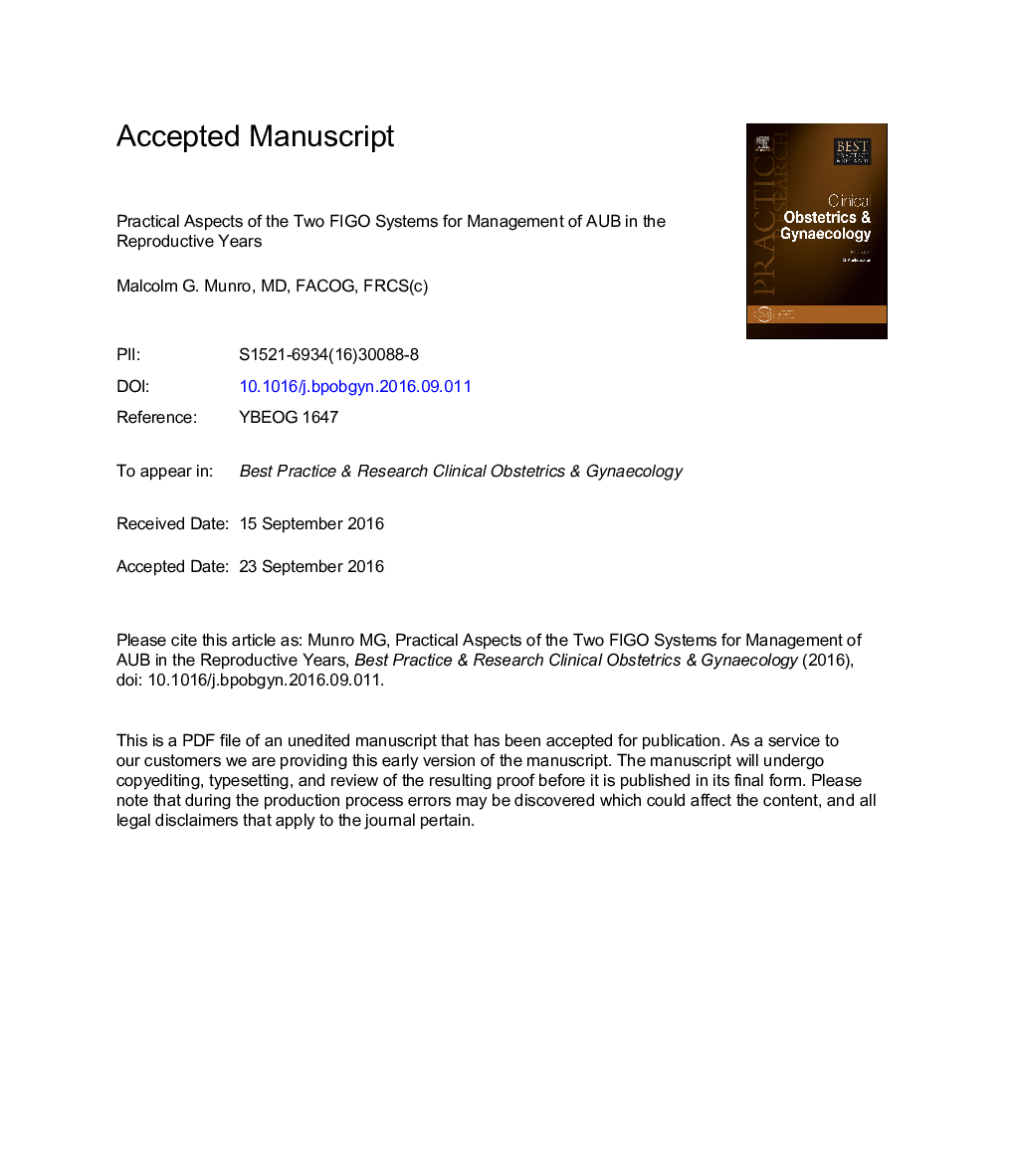| Article ID | Journal | Published Year | Pages | File Type |
|---|---|---|---|---|
| 5691427 | Best Practice & Research Clinical Obstetrics & Gynaecology | 2017 | 36 Pages |
Abstract
The FIGO systems defining the nomenclature and symptoms of abnormal uterine bleeding (AUB) in the reproductive years (System 1) and the PALM-COEIN classification of causes of AUB (System 2) are designed to facilitate research, education, and the provision of optimum clinical care for affected women. Development of these systems has been the result of a collaborative effort of experts in bench and translational and clinical research from six continents aided by a spectrum of representatives from relevant medical societies, journals, and regulatory bodies. Integral to this development has been a decision to cease the use of poorly defined and inconsistently used terms such as menorrhagia, metrorrhagia, and dysfunctional uterine bleeding, to name a few, and replace them with a set of terms and definitions that are relatively easily understood and translated into the spectrum of languages used by medical providers and patients globally. The utilization of these systems requires a disciplined approach to obtaining a menstrual history, relatively simple laboratory investigations, and the appropriate use of imaging techniques accessible to most clinicians worldwide. This section describes the two systems, their crucial role in guiding investigation, and an approach to implementation, all designed to facilitate the creation of a menu of therapeutic options, considering the identified factors contributing to the problem of nongestational AUB.
Related Topics
Health Sciences
Medicine and Dentistry
Obstetrics, Gynecology and Women's Health
Authors
Malcolm G. MD, FACOG, FRCS(c),
